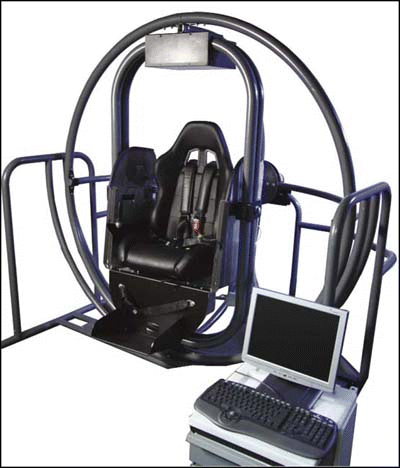Kamran Barin, PhD, Assistant Professor of Otolaryngology at Ohio State University in Columbus, agreed with Dr. Epley regarding the frequency of dizziness. The general otolaryngologist is the one who sees dizzy patients, he said. It’s important to realize what kind of vestibular testing is available, when patients should be referred and for which tests, and which in-office tests can be done to see what is the most appropriate route for managing the condition.
Explore This Issue
April 2006In-Office Tests
All available vestibular function tests are quite limited, said Joel Goebel, MD, Professor of Otolaryngology and Head and Neck Surgery at Washington University in St. Louis, Mo., where he is the Director of the Dizziness and Balance Center.
The ultimate test would one that evoked potential, he said. Can you do a stimulus and evoke a potential to show which part of the inner ear is involved and the degree of involvement? We don’t have a perfect evoked potential.

The lack of direct access to the vestibular system is a key factor in the limitations of vestibular function testing, he added. We don’t have a direct access to the vestibular system, so we have to look at proxies, he said. These include eye movements and postural movements. Because we don’t have direct access and use proxies, our tests are not that specific.
However, several tests that can be performed in the otolaryngology clinic are quite useful. Two tests that can help the general otolaryngologist establish the cause of the vertigo are the Tullio response test and the pressure response test, he said.
Tullio and Pressure Tests
The Tullio test involves putting a tuning fork to the ear of a standing patient. With the pressure test, the clinician applies a squeeze bulb to the patient’s ear and watches the eyes for the onset of nystagmus. These tests can identify which ear is implicated in the balance problem, Dr. Epley said. He added that he is working on a device that will give a quantified amount of sound and pressure in the ear so that the results are standardized.
Dr. Soileau stressed that the exam should include a careful examination of the patient’s cranial nerves and hearing, either with tuning forks or by an audiometric study.
Dix-Halpike Maneuver
Next, consider a Dix-Halpike maneuver, Dr. Soileau said. This maneuver involves bringing the patient from a lying to a sitting position with the head in one position and allows the physician to assess for nystagmus or dizziness symptoms.
Leave a Reply